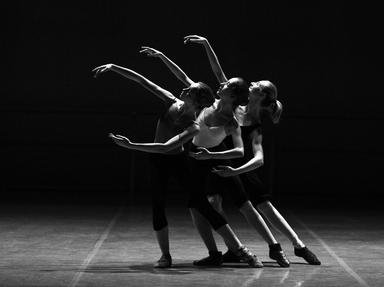Quiz Answer Key and Fun Facts
1. Albrecht, Hilarion, the Wilis
2. Clara, Drosselmeyer, the Sugar Plum Fairy
3. Swanhilda, Franz, Dr. Coppelius
4. Crassus, Phrygia, Aegina
5. Prince Siegfried, Odette, Odile
6. Tybalt, Paris, Friar Laurence
7. The Magician, the Moor, the Ballerina
8. The Girl, the Rake, the Shy Young Man
9. Princess Aurora, King Florestan, Carabosse
10. Sancho Panza, Gamache, Dulcinea
Source: Author
stedman
This quiz was reviewed by FunTrivia editor
ponycargirl before going online.
Any errors found in FunTrivia content are routinely corrected through our feedback system.


